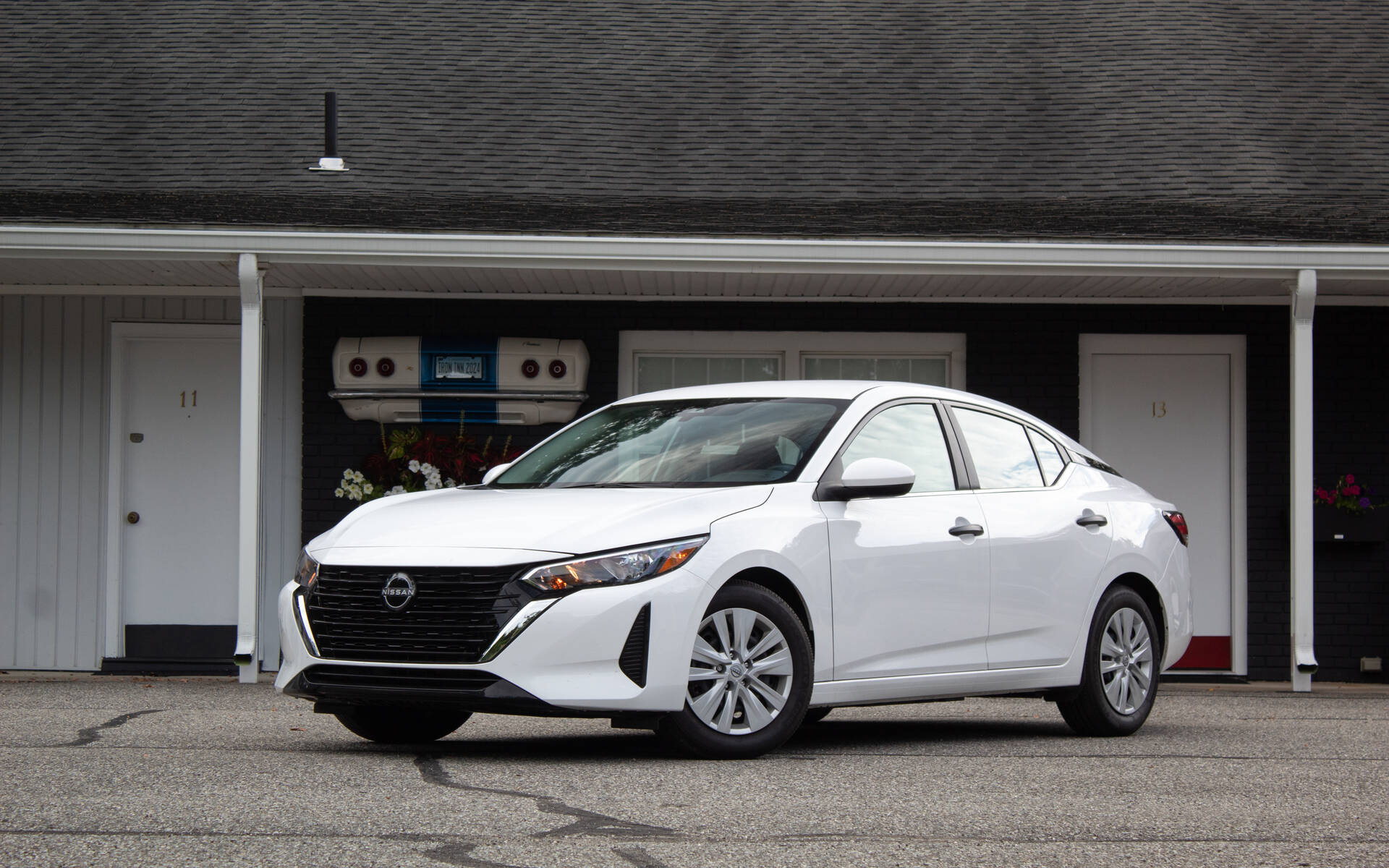2024 Nissan Sentra: The Basics, and a Manual Gearbox

| Strong points |
|
|---|---|
| Weak points |
|
Back in July, we picked a refreshed 2024 Nissan Sentra in base S trim with a manual transmission to drive to Lime Rock Park, Connecticut for the first-ever Sentra Cup race on U.S. soil. This particular model happens to be the one that drivers use in the series. Of course, ours wasn’t a race-prepared model, but the chassis, engine and gearbox were exactly the same.
At $22,548 (MSRP), the Sentra S offers all the basics you want in a compact car including heated front seats, a 7-inch touchscreen and (wired) Apple CarPlay and Android Auto compatibility. There are many driver assistance features, too, such as blind spot monitoring and automatic emergency braking with pedestrian detection, all of which are doing a proper job of keep occupants safe.
- Also: These Are the Vehicles Consumers Like the Most and the Least in 2024
- Also: 2024 Nissan Sentra Gets Styling Tweaks, More Efficient CVT

Granted, few people seem to be willing to settle for the minimum, especially among today’s technology-obsessed crowd. But you know what? Driving a bare-bones sedan can be a pretty refreshing experience.
Outstanding Fuel Economy
Our roundtrip of more than 1,100 km gave the Sentra plenty of time to showcase its good road manners and pleasant comfort levels. The seats are nicely designed and actually good for the back. Despite limited adjustability, you can find a satisfying driving position. Also, space is generous for all occupants, although those standing six feet or taller will find rear-seat headroom to be tight.

The suspension manages to deliver good handling and ride quality without being too soft. In sharp corners, the car remains stable with no significant body roll. It does suffer from those 16-inch Firestone FT140 tires, which could use more grip.
Meanwhile, the naturally aspirated 2.0-litre four-cylinder engine serves up 149 horsepower and 146 lb-ft of torque—nothing to get excited about, but enough for normal daily commutes. Passing manoeuvres require some planning, such as downshifting two or three gears and taking a solid jab at the throttle to push the engine at least past 3,000 rpm. The manual transmission is adequately calibrated, but for the sake of precision and sporty driving, we would have liked shorter gear ratios and a heavier shifter.

Though short on power, the Sentra’s engine is a marvel of fuel economy—no hybrid tech or auto stop-start needed. We achieved a final score of 5.4 L/100 km while driving almost exclusively on highways, which is 1 L/100 km better than the official rating from Natural Resources Canada. Impressive, isn’t it?
As far as practicality goes, the trunk offers a ton of cargo space and a large opening. You can release the trunk lid by pressing a button on the keyfob or next to the steering wheel, but for some reason there isn’t one on the lid itself. How curious.

Money-Saving Purchase
New vehicle prices are rising and affordability is becoming a serious issue across the industry. The Mitsubishi Mirage is currently the only car under $20,000 in Canada, but it won’t return for 2025 as we recently reported. Next up are the Nissan Versa (MSRP of $20,498) and Sentra.
The latter is a financially attractive answer to the popular Toyota Corolla and Honda Civic. Nissan doesn’t have any hybrids at the moment, but the Sentra has proven to be a tremendously efficient performer. Also, it’s likely to be cheaper to maintain and repair than many rivals since it doesn’t rely on a turbocharger or auto stop-start technology.











